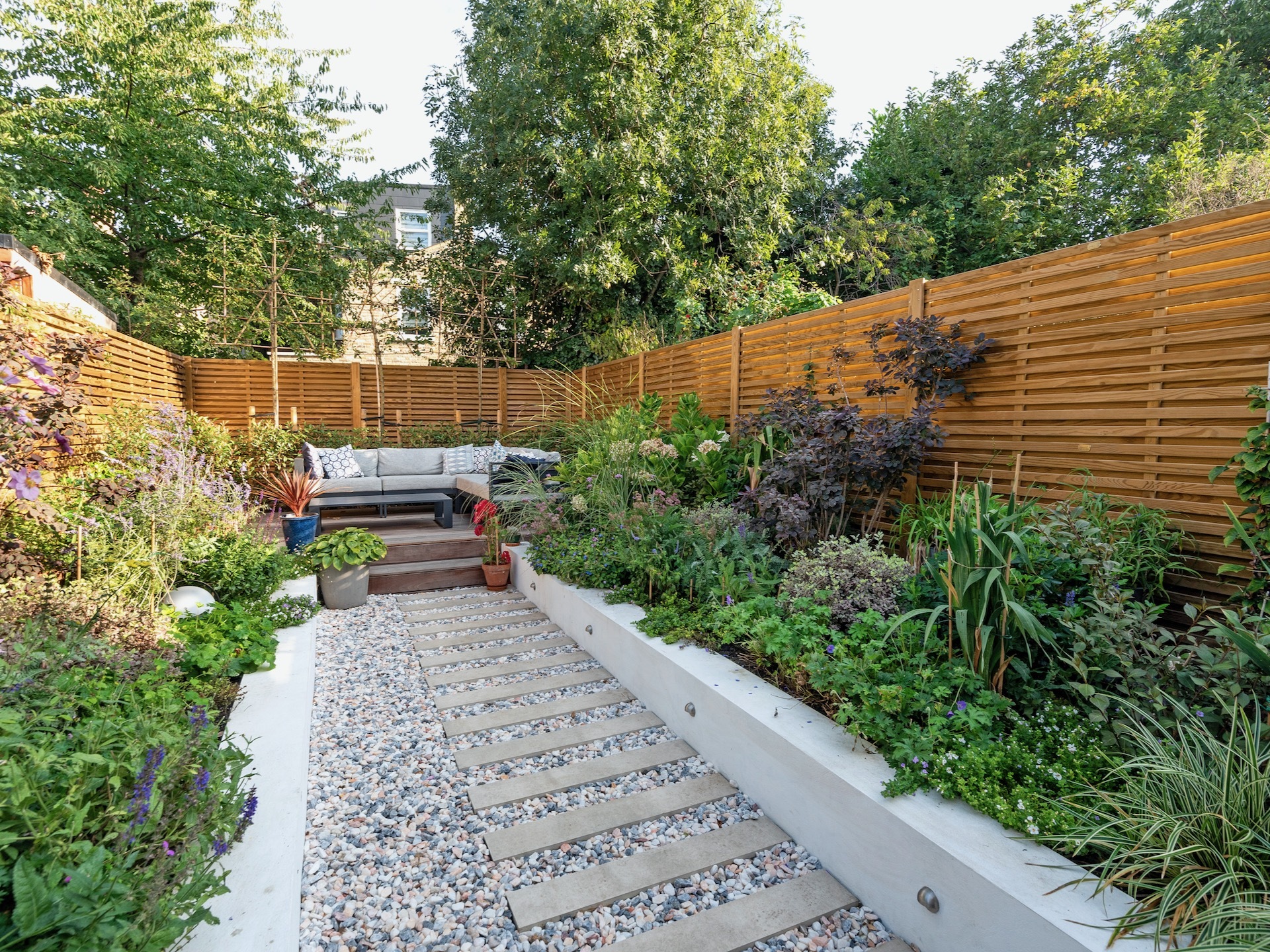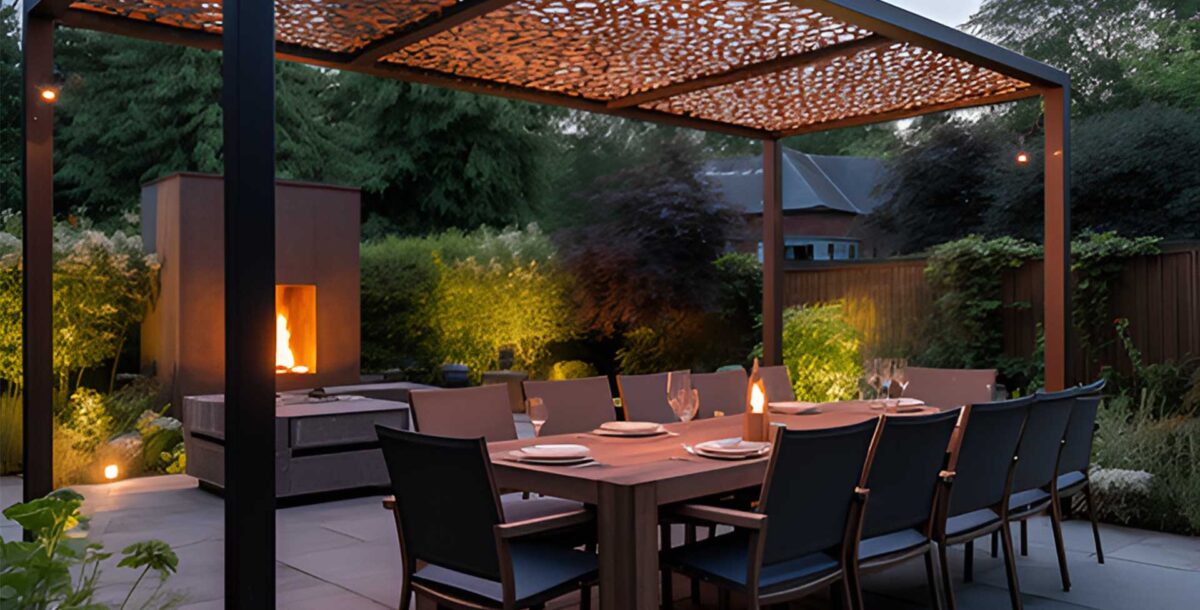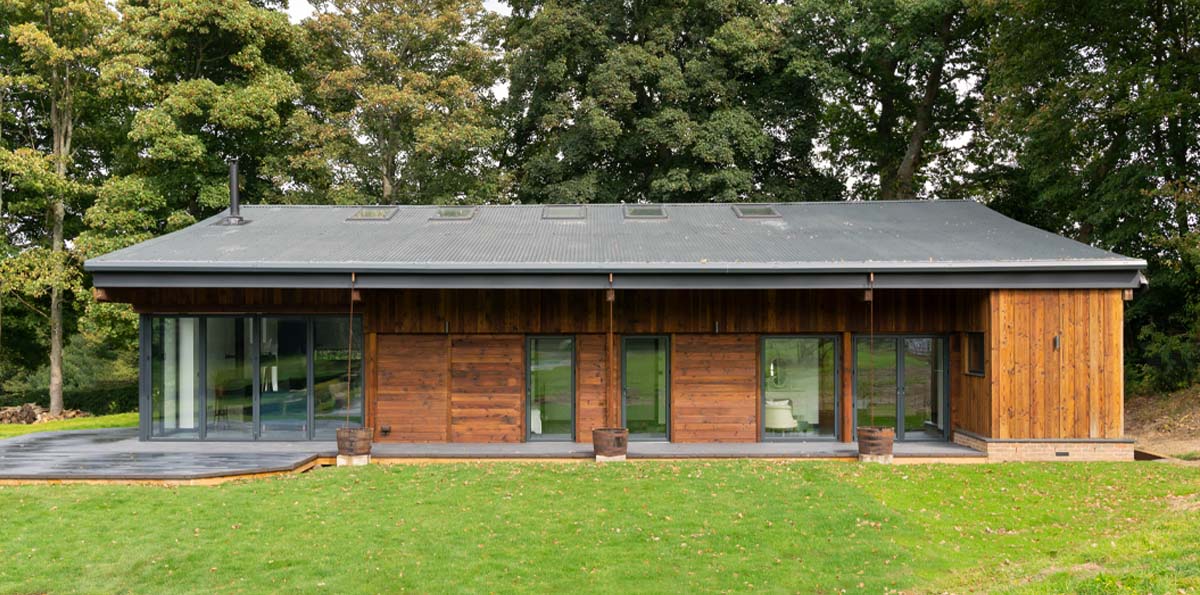Garden landscaping for new builds: 10 ways to establish an empty plot
Stumped by a blank canvas of a garden? Our suggestions for paths and planting, terraces and trees will spur you into action
Sometimes, there’s nothing better than having a blank canvas to work on. But equally, garden landscaping for new builds can throw up its challenges – if not a total creative block.
It’s not surprising, really. If you’ve just completed a self-build project, you may have limited funds or have run out of the steam needed to generate plans for your outdoor space. And if you’ve moved into a fresh new-build, the wall-to-wall – or rather fence-to-fence – turf your developer has laid may leave you uninspired.
To get you back on track, our experts have come up with some fresh thinking for your empty garden. We’ve got ideas on where to begin, suggestions for planting and paving, how to add character instantly, and a few curve balls to make your garden landscaping ideas stand out from the rest. Dig in…
1. Think about how your house and garden ‘communicate’
The first thing to consider when tackling a new-build garden is its relationship with your house. The most successful designs will offer a seamless transition between the two spaces, and if self-built, might have already incorporated some biophilic design.
The obvious way to do this, of course, is with floor-to-ceiling glazing that opens out onto your garden. “We’d then choose a similar floor finish running from inside to outside,” says Carlé Scott Gerber, a partner at architectural firm U-Life Design. “Or run an outdoor kitchen as an extension of your internal cabinetry.”
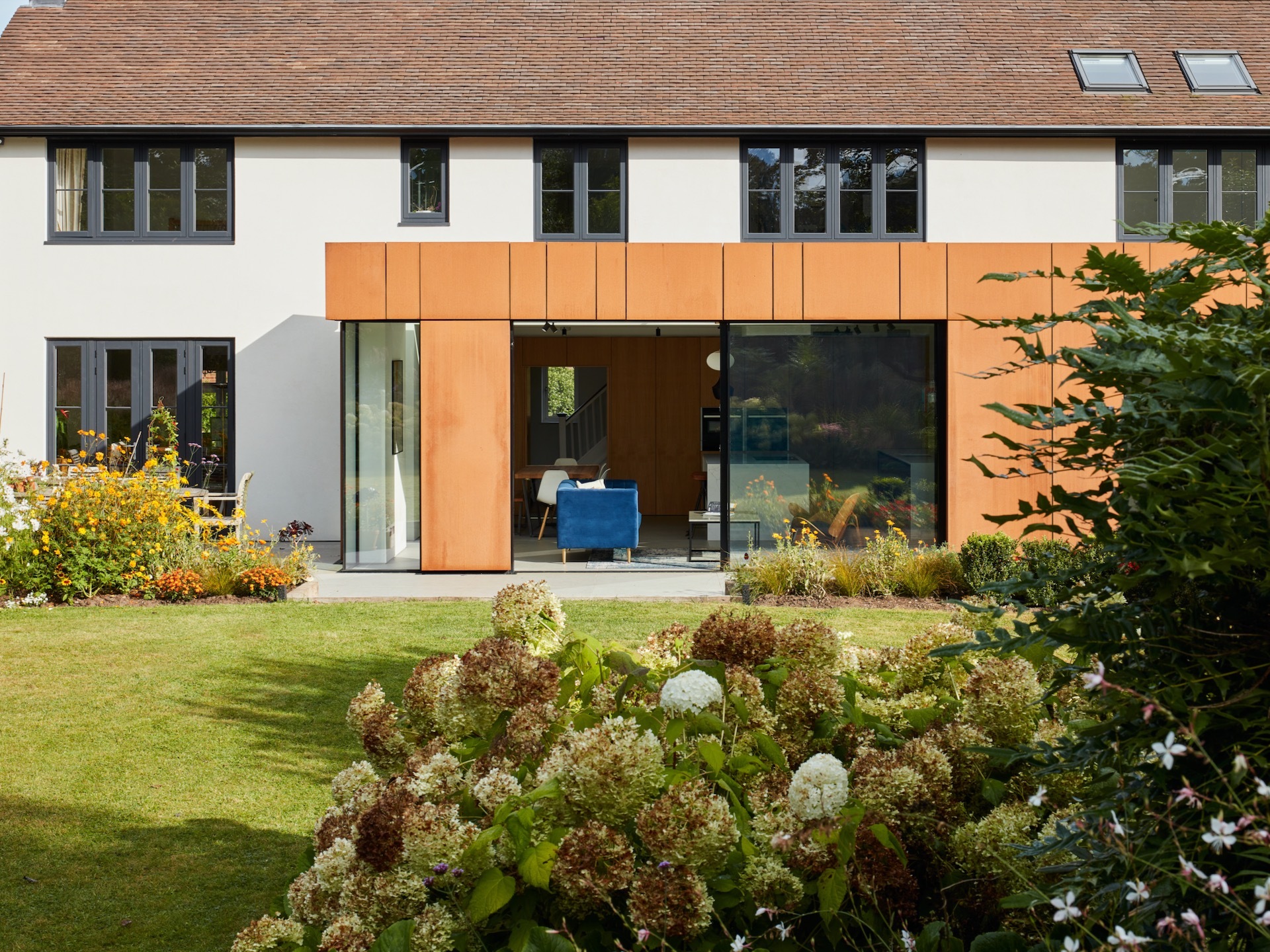
- In this project by Stylus Architects, Corten steel clads the building, and the same flooring style has been used to merge the indoor and outdoor spaces. The flat roof is planted with a wild flower meadow.
‘We’re working on a lot of roof gardens and green roofs with meadow grass,” adds architect Glen Thomas. “Herb gardens are a big thing, too – certainly in urban area. You might walk out from a bedroom balcony into fragrant herb garden. Or there might be a sunken kitchen with a window that you open and it’s flush with a herb garden. It’s all about that connection to nature.”
“Consider using materials, colours and textures that mimic those used in the construction of your home and that complement the aesthetic of your property,” says Jamie Jones, founder of a leading outdoor living company, Open Space Concepts. “Whether it’s matching flooring materials, mirroring the clean lines of a contemporary home with sleek garden furniture or reflecting reclaimed brickwork with natural stone pathways.”
2. Look at drainage
“New-build houses are notorious for poor drainage,” says Luke Richards, owner-director of Terra Firma Landscapes. “Begin by conducting a thorough ground survey to assess the soil type and determine any existing drainage issues. If your garden exhibits poor drainage, especially if there’s a heavy slope directing water towards your property, implementing a tiered drainage solution becomes imperative.”
“Tiered drainage systems offer an effective means of managing water flow while simultaneously, they can be made to look very appealing and can either be subterranean or surface level with a prestige finish,” Richards continues. “By incorporating features such as French drains, swales, or permeable paving, you can redirect excess water away from your property, mitigating the risk of waterlogging and soil erosion.”
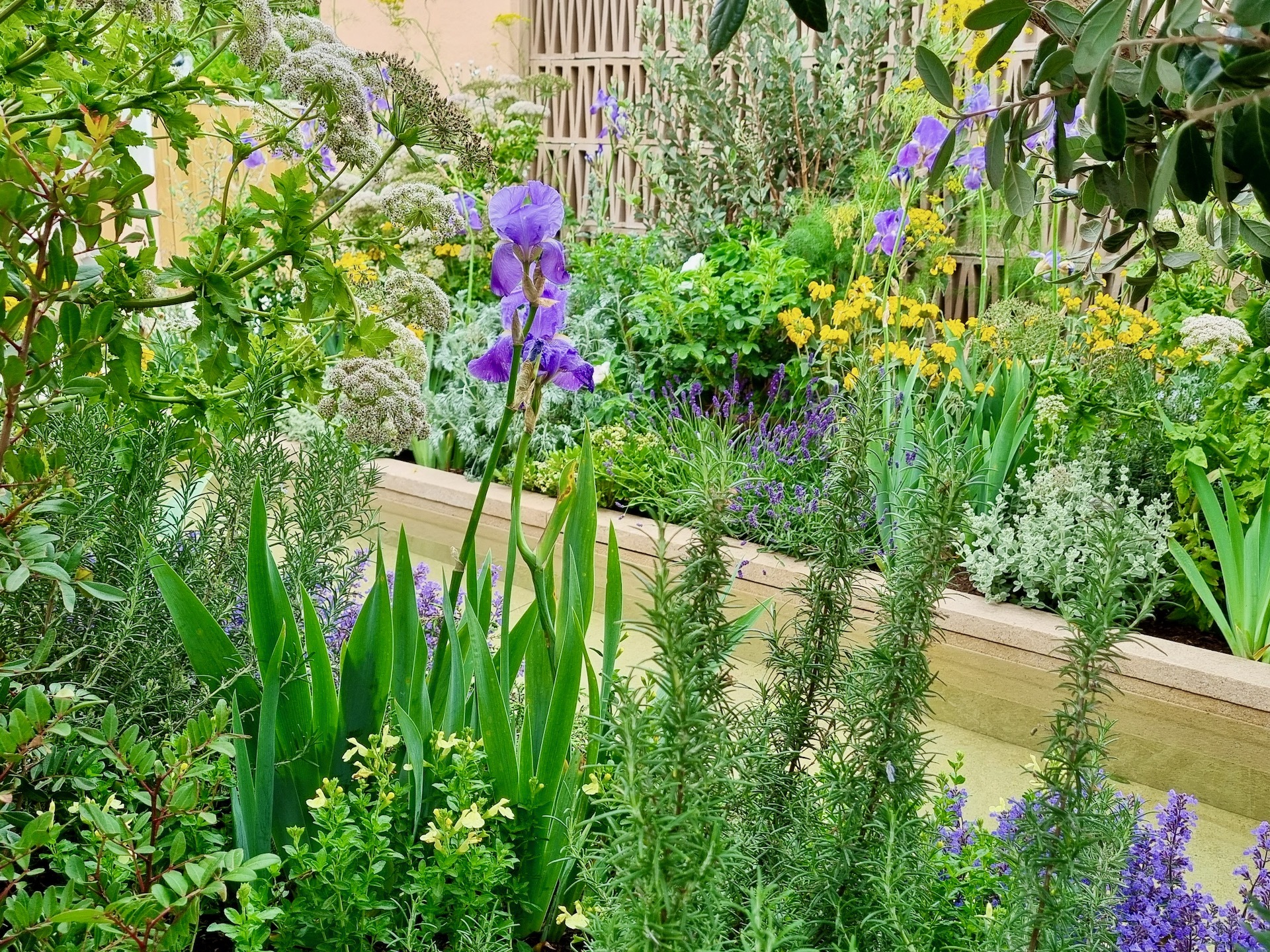
- Raised beds like these can help manage issues with poor drainage. Image credit: Amy Cutmore
“Plus, integrating landscaping elements such as raised beds, terraced gardens, or strategically placed retaining walls can help manage water runoff and prevent soil saturation.”
“If you haven’t got a lawn yet, introducing one could be a good idea,” adds Chris Terry, landscape manager at Marshalls. “Lawns are permeable and can help control water run-off when it rains – reducing the risk of flooding, whilst also providing natural filtration for rainwater.”
“If you have space for a driveway, you may want to consider permeable paving,” Terry adds. “It’s aesthetically pleasing and durable, and will once again help reduce flood risks, filtering the water into the ground beneath the stones. A gravel driveway can be a nice alternative if you want it to have a slightly ‘softer’ appearance. However, this will require more maintenance in the long term to keep it looking fresh and well distributed.”
3. Install outbuildings and outdoor kitchens
With your garden in its infancy, now is the right time to consider features that may be disruptive to install later. This might include a garden office with heating and lighting or a plumbed-up outdoor kitchen.
“An outdoor kitchen often aligns with plans to landscape or hardscape the area,” says Steve Esdaile, founder of EO Kitchens. “Therefore, evaluate your new garden for any natural focal points or suitable areas for an outdoor kitchen. An outdoor kitchen close to the house simplifies transferring food, utensils, and other essentials, which is beneficial if you often entertain or dine outdoors.
“However, some prefer their outdoor kitchen at the garden’s far end, creating a separate, peaceful zone. Adequate sunlight improves the ambience and ensures comfortable kitchen use throughout the day. Assess the sun’s movement throughout the day to identify sunlit areas.”
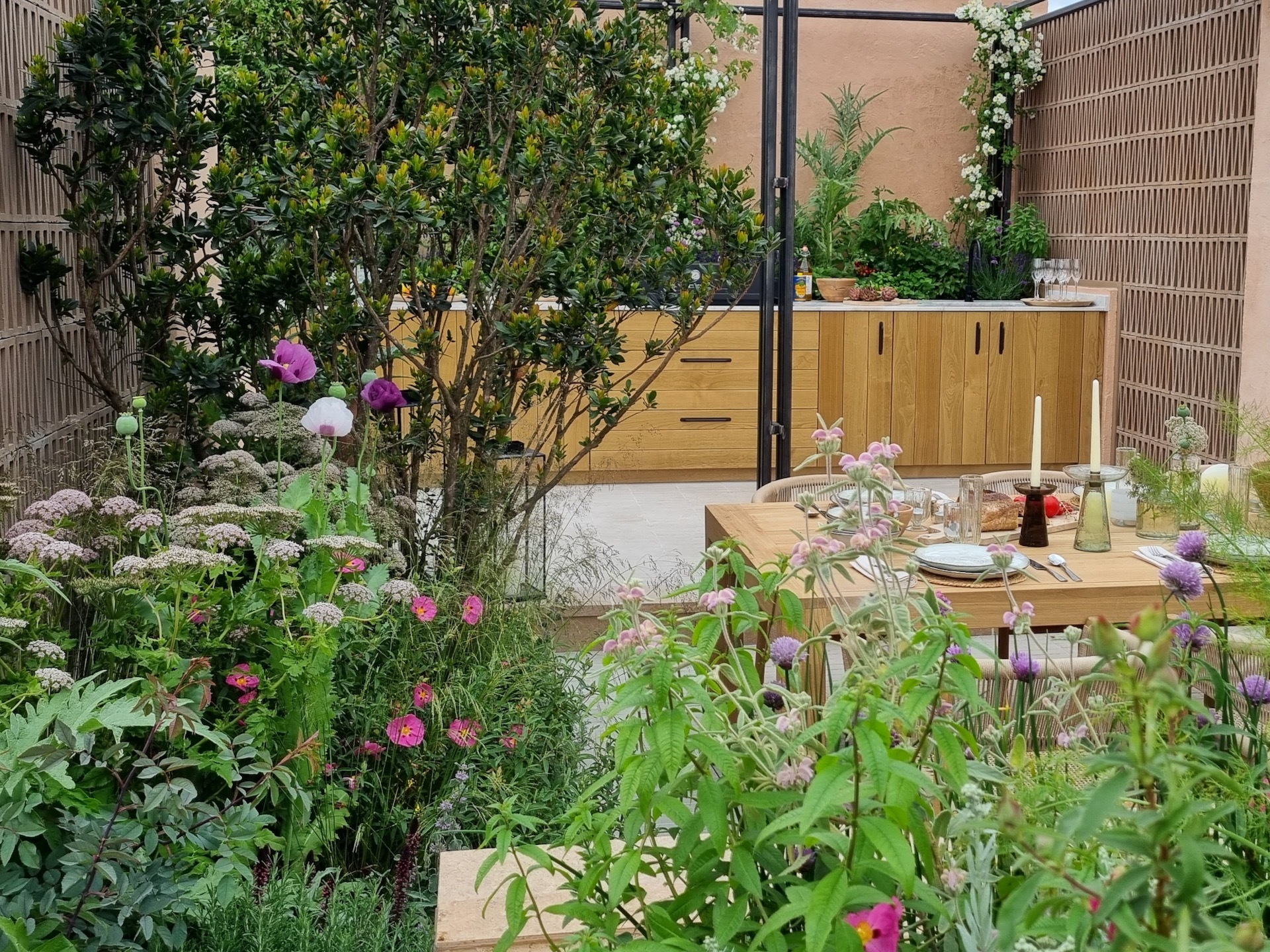
Situating an outdoor kitchen away from the house can make the most of available sunlight and create a completely separate entertaining area. Image credit: Amy Cutmore
Once you’ve established its position, you can start to plan for the necessary utilities. “Electricity is integral for operating various appliances. “Ideally, an underground armoured cable should be installed to supply reliable power,” says Esdaile, who suggests that aside from cooking appliances, an outdoor fridge deserves consideration. “Choose one specifically designed to withstand the challenges posed by both high temperatures and cold weather without sustaining any damage,” he says.
“Including a sink in your outdoor kitchen can greatly increase its usefulness, too,” says Esdaile. For this, a water feed needs to be installed, typically through a flexible pipe supplying cold water. If hot water is desired, an electric instant water heater can be installed underneath. And waste drainage is another important aspect. Ideally, a drainage point connected to the mains system should be installed for efficient waste disposal. If the garden is far from the main drainage, a soakaway system can be an alternative option, but mains drainage is generally recommended.”
4. Bring curves and texture to a boxy garden
One challenge shared by many a new-build garden is a boxy, square shape, often surrounded on three sides by fencing. With no natural landscaping to work with, it can be hard to know how to soften such hard lines. However, Luke Richards, has a few tricks up his sleeve.
“My first suggestion would be to add ‘interestingly shaped’ areas of paving or lawn,” he says. “Experimenting with geometric patterns or organic curves helps to introduce visual interest and break up the monotony of a traditional square garden often associated with new builds.”
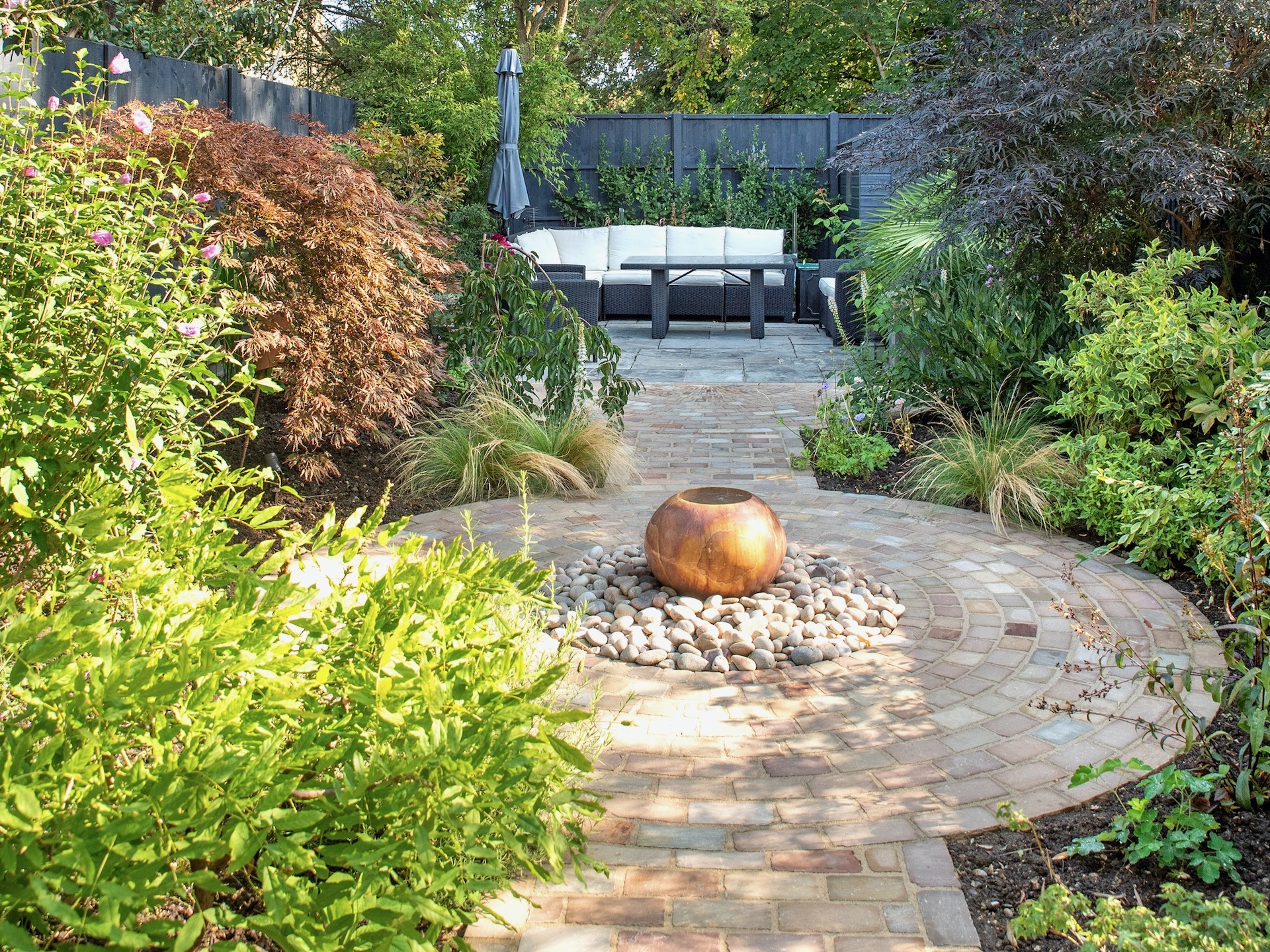
Image credit: Terra Firma Landscapes
“I’d also use clay pavers to create textured areas to the new space,” Richards adds. “Their rustic appeal and earthy tones will not only complement the natural surroundings, but will delineate pathways, define seating areas, or craft intricate patterns, too. You’ll add depth and personality. On another note, if you are looking to add a sensory experience to your design, the tactile quality of clay pavers will serve you well.”
“Having long, winding paths can add a touch of interest to an otherwise plain garden and help the visitor navigate gracefully through the landscape,” Richards continues. “It’s all about creating a sense of discovery and charm, enticing garden visitors to explore further. For smaller gardens, cutting paving into a curved edge can give an interesting look by softening sharp angles and creating a more inviting atmosphere. Experiment with gentle curves to delineate borders or define seating areas.”
5. Incorporate the latest paving trends
“When it comes to patios and paving, there are so many materials to choose from,” says Chris Terry at Marshalls. “But in terms of those that are ‘on trend’ for 2024, Indian sandstone is a great choice for a garden revamp. Ethically sourced options are still affordable, and the natural appearance provides a rustic feel to the space. The varying tones of the stone mean that this paving choice will suit almost any setting and aesthetic.”
“Porcelain paving is also a nice option; known for its low maintenance, beauty and durability,” says Terry. “This is an ideal solution for many applications, even for those who have moss-prone gardens due to dampness and shade. The wide range of colours and shades makes it a diverse choice for any outdoor space.”
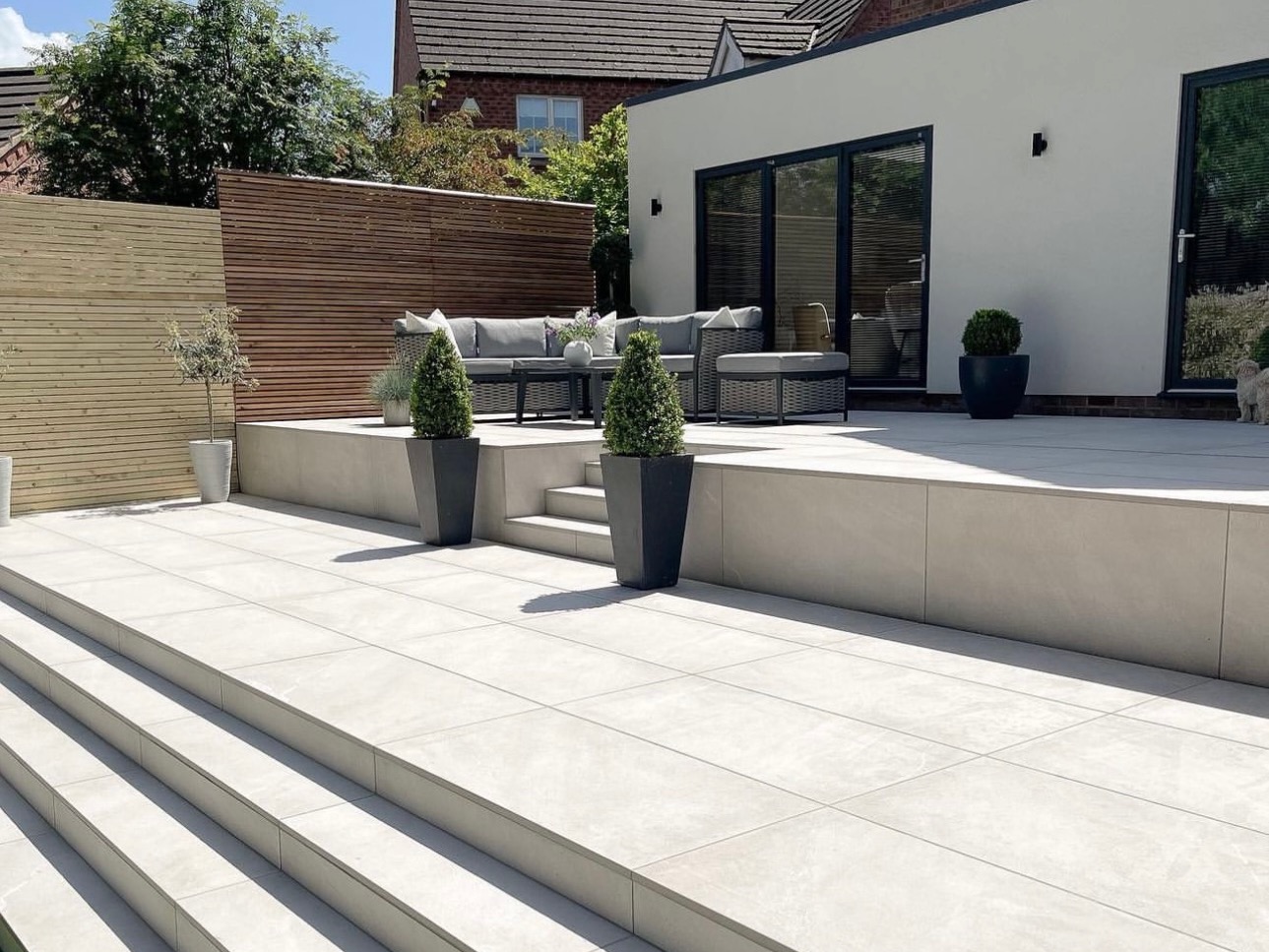
Porcelain is an increasingly popular external paving choice due to its non-slip properties and easy maintenance. Image credit: RF Paving
“We’re seeing high demand for external porcelain paving,” agree landscaping experts RF Paving. “Installed in a very similar method to traditional sandstone paving, one of its key advantages is its ‘non slip’ properties. All the external porcelain we offer has an R11 slip rating, giving peace of mind and answering the commonly asked question; ‘is it slippery when wet?’ No, in fact, the tactile finish to the surface means it is less slippery than wet natural stone.”
“When it comes to the front of the house, concrete block paving is a popular choice, ideal for driveways and garden paths,” adds Terry. “The range of colours allows for borders and patterns to be created through different layout choices. Concrete block paving can also be installed flexibly, compared to natural stone setts, so it’s easier to add to your space.”
6. Include a deck
“For decking areas, we suggest composite decking due to their numerous advantages,” says Jo Winston, a sales and marketing director, who coordinates the landscaping at St. Modwen Homes’ developments. “Composite decking not only replicates the appearance of natural wood but is also durable and resistant to rot, splintering, and fading. Its low-maintenance nature ensures long-lasting beauty without the need for regular upkeep.”
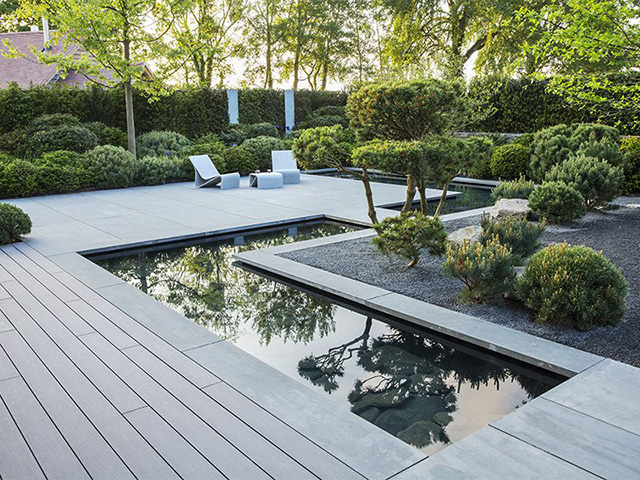
- Image credit: Havwoods
“You could think about adding a pergola or retractable awning can provide shade and shelter, so you can make the most of the area all year round,” suggests Jamie Jones.
7. Plant a garden on a roll
Choosing plants for a new garden can be a minefield – not to mention extremely expensive. However, Antony Henn, founder and director of Garden On A Roll, may have come up with the perfect solution. “I’m a garden designer by trade, and Garden On A Roll is simply a case of my taking my knowledge and love of plants and arranging plants, sticking it in a box, and sending to people around the country.”
To start, choose one of eight looks for your border, be it English Cottage Border, Shady Evergreen Border or Mediterranean Border. Then pick the length and width of your border, and you’re ready to buy. “We then print a roll of biodegradable paper with circled letters on it, which match up to the plants we send. You can lay the paper down, place the plants through the paper as indicated, cover the paper with compost, and watch your garden grow.”
Prices start from £95 for a 40cm-wide by 2m long roll with seven plants, a trowel, a pair of gloves and chicken pellets all included.
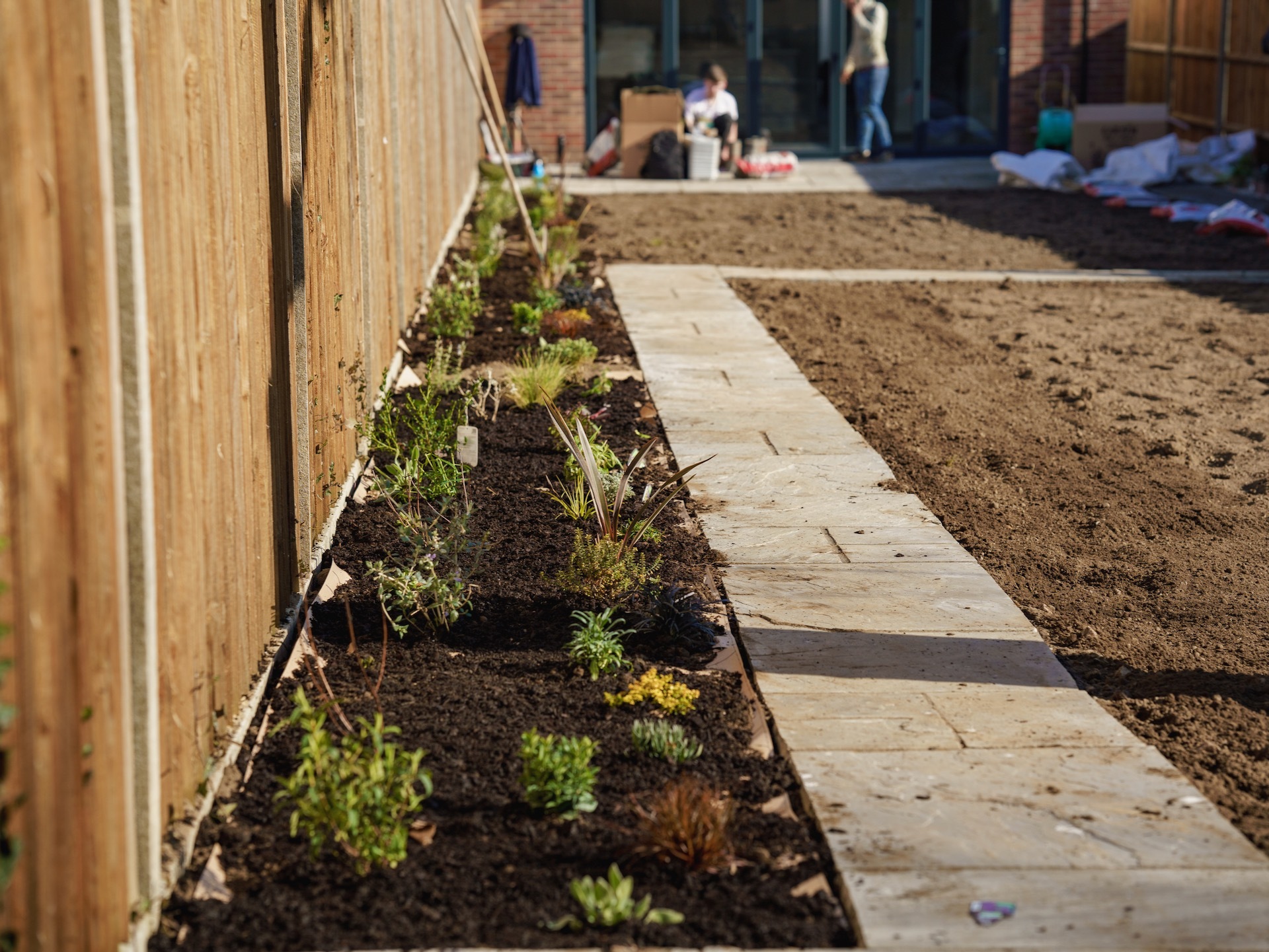
- Buy a ‘Garden on a Roll’ and create an instant border without having to worry about plant selection or size
Alternatively, if you want to pick your own plants, Jo Winston has some suggestions: “In terms of shrubs, evergreens like choisya, hebe, ceanothus, and red robin hedging are great choices,” she says. Their year-round foliage adds structure, texture, and colour to the garden, and they’re also low maintenance and extremely durable, which helps with the longevity of the landscape design.”
“For flowers, we opt for marigolds and pansies and pair these with a range of bedding plants for instant bursts of colour and texture without the wait.”
8. Give nature a home
While your first thought for your garden is how it can incorporate entertaining space for family and friends, there are other guests to consider – the local wildlife.
“We adopt a biodiversity-led approach that creates impact from day one, rather than layering landscaping on to the development at the end,” says Helen Nyul, Head of Biodiversity at Barratt Developments. “This creates a long-term benefit for nature, as well as enhancing residents’ health and wellbeing.”
Through its partnership with the RSPB, in place since 2016, Barratt has sought to improve the way in which wildlife is incorporated into its developments. This partnership began at Kingsbrook, a 2,450-home development on the edge of Aylesbury. “Around 60% of the development is green space, and the design incorporates biodiverse sustainable drainage systems, community orchards, meadows and a suite of habitat features built into the fabric of new homes,” explains Nyul. “These innovations have become standard practice across our developments.”
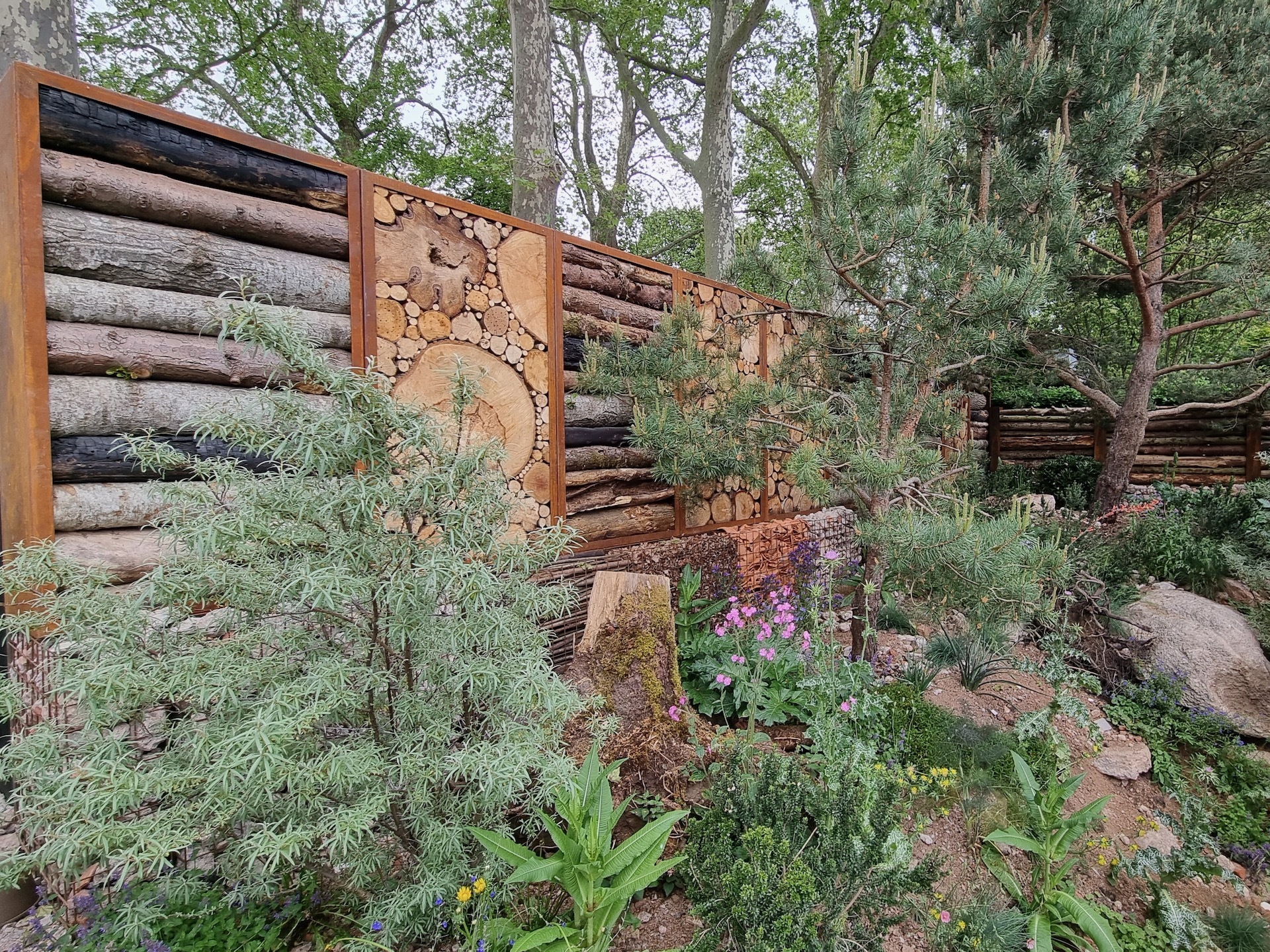
- Go the whole hog and create a huge bug wall for wildlife, as seen in Tom Massey’s The Royal Entomological Society Garden at Chelsea Flower Show 2023. Image credit: Amy Cutmore
“Our show home gardens are now typically fitted with bird boxes, hedgehog homes and highways, dead wood homes for insects, bee hotels, water sources for wildlife and composting facilities. We also include wilder areas or small wildflower gardens to encourage pollinators and other creatures to find a home.”
“One of our more innovative ideas which we promote for all new builds is a swift brick that is integrated into buildings. With the UK’s population of swifts in serious decline, building new homes for the birds was an important goal of our partnership with the RSPB, which led to the introduction of the swift brick. This is now being installed on our developments across the country.”
9. Incorporate water
“Introduce small but effective focal points by using self-contained water features,” says Luke Richards. “Self-contained designs that effortlessly blend with your garden’s aesthetic, such as elegant fountains or soothing cascades, not only add visual appeal but also create a serene atmosphere, for an inviting and calming outdoor space.”
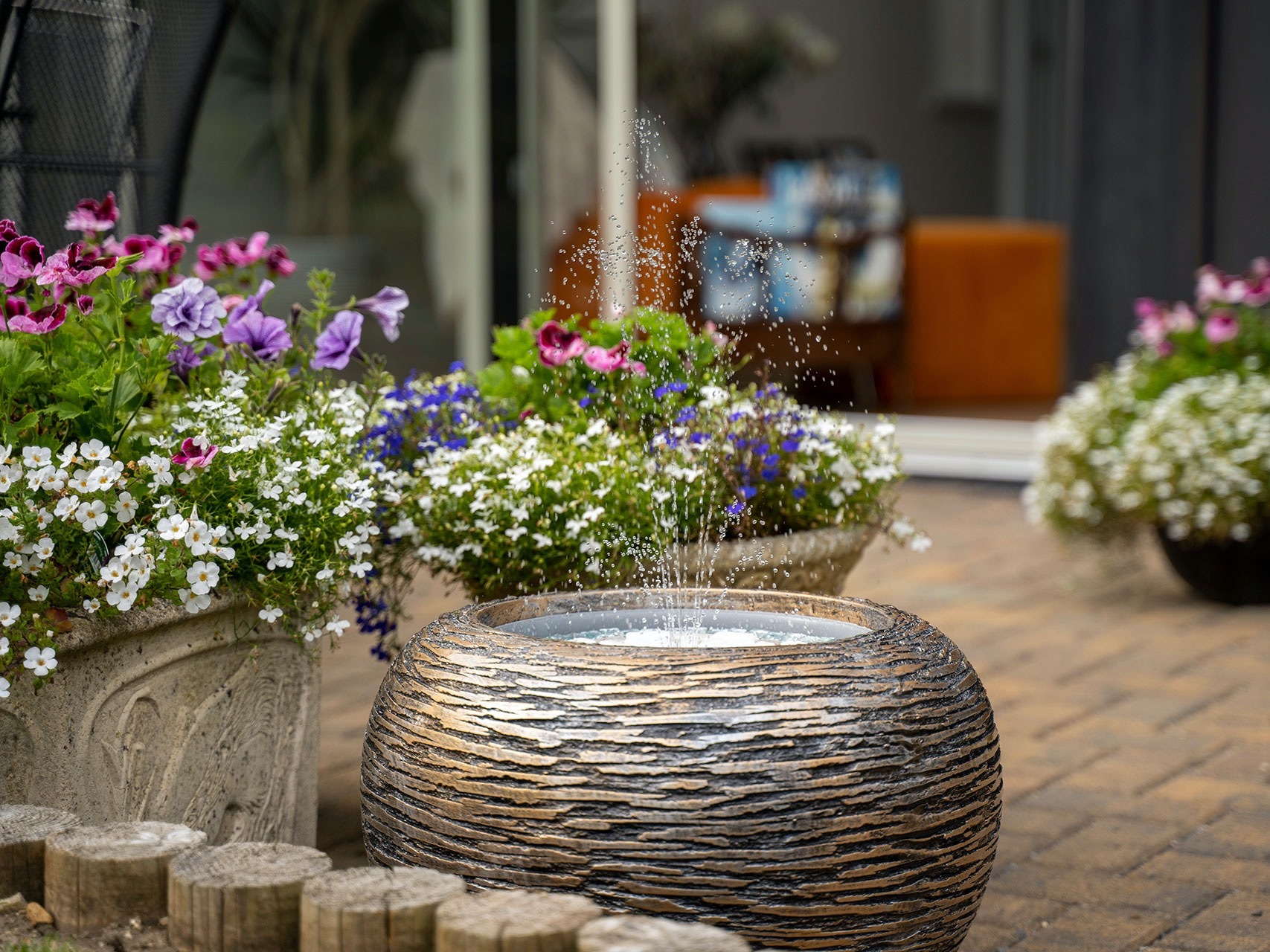
Image credit: Hydria
Now, a striking water feature could set you back hundreds, if not thousands of pounds, even before the expense of delivery. However, there are some affordable and innovative options out there, such as the Hydria water feature kit, £99.99. This rechargeable unit allows you to turn any plant pot with an interior diameter of 30cm or more into a water feature in minutes, with no wires, solar panels or plumbing required. When used for two hours a day, you can have it running in your garden for up to six weeks between charges.
10. Plant trees for colour, shade or privacy
“Trees can serve multiple functions, including providing shade from the sun, enhancing privacy by screening neighbouring windows or schools, or even reducing noise pollution from nearby roads,” says Luke Richards. “Think about the trees’ purpose and the specific benefits they might provide. For instance, small fruit trees can add seasonal interest and lush greenery during the summer months, while vibrant acers can create stunning visual impact with their autumnal foliage colours and textures. If noise reduction is a priority, consider planting Conifers known for their dense foliage, which effectively buffers sound from busy road.
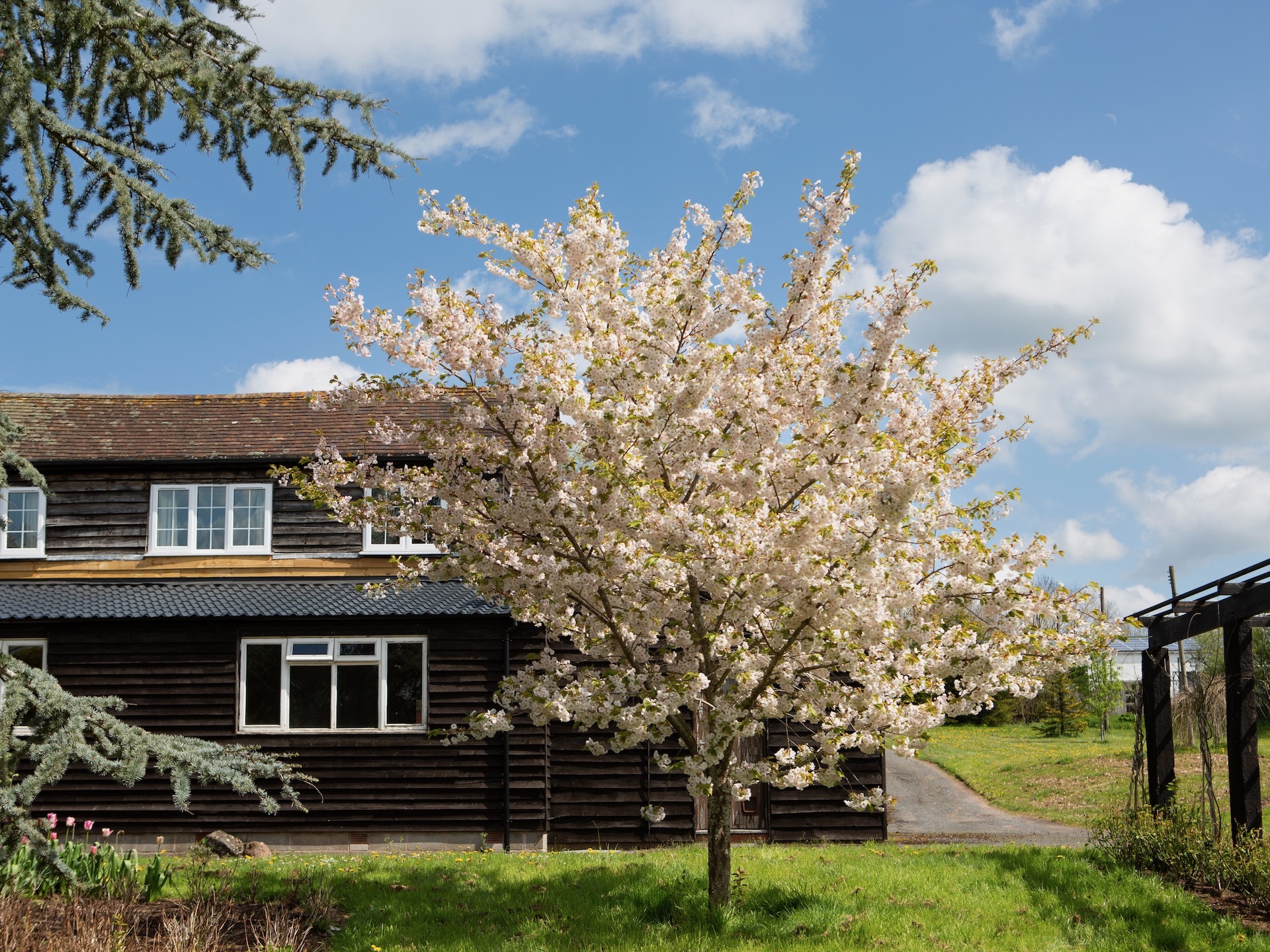
- Even a young version of this Prunus Fragrant Cloud tree would make impact in a new garden. Image credit: Frank P Matthews
When it comes to quick-to-establish trees that add instant character and colour, you’re spoilt for choice, according to Matthew Thomas, sales director at tree nursery Frank P Matthews. “There are hundreds to choose from,” he says. “We would recommend birch, flowering cherries, rowans, magnolias and liquidambars.”
Trees, too, can be useful for providing more privacy in an overlooked plot, but Matthew tells us not assume they have to be evergreen. “Deciduous trees will be in full leaf in summer, when people are most likely to be outside,” he explains. “There are many trees that can be pruned to create quite dense canopies that are excellent for screening and brilliant for wildlife such as beech, crab apples, hornbeams and hawthorns. For taller trees that can be left to grow unpruned, we would recommend birch, acer rubrums and flowering cherries.”

